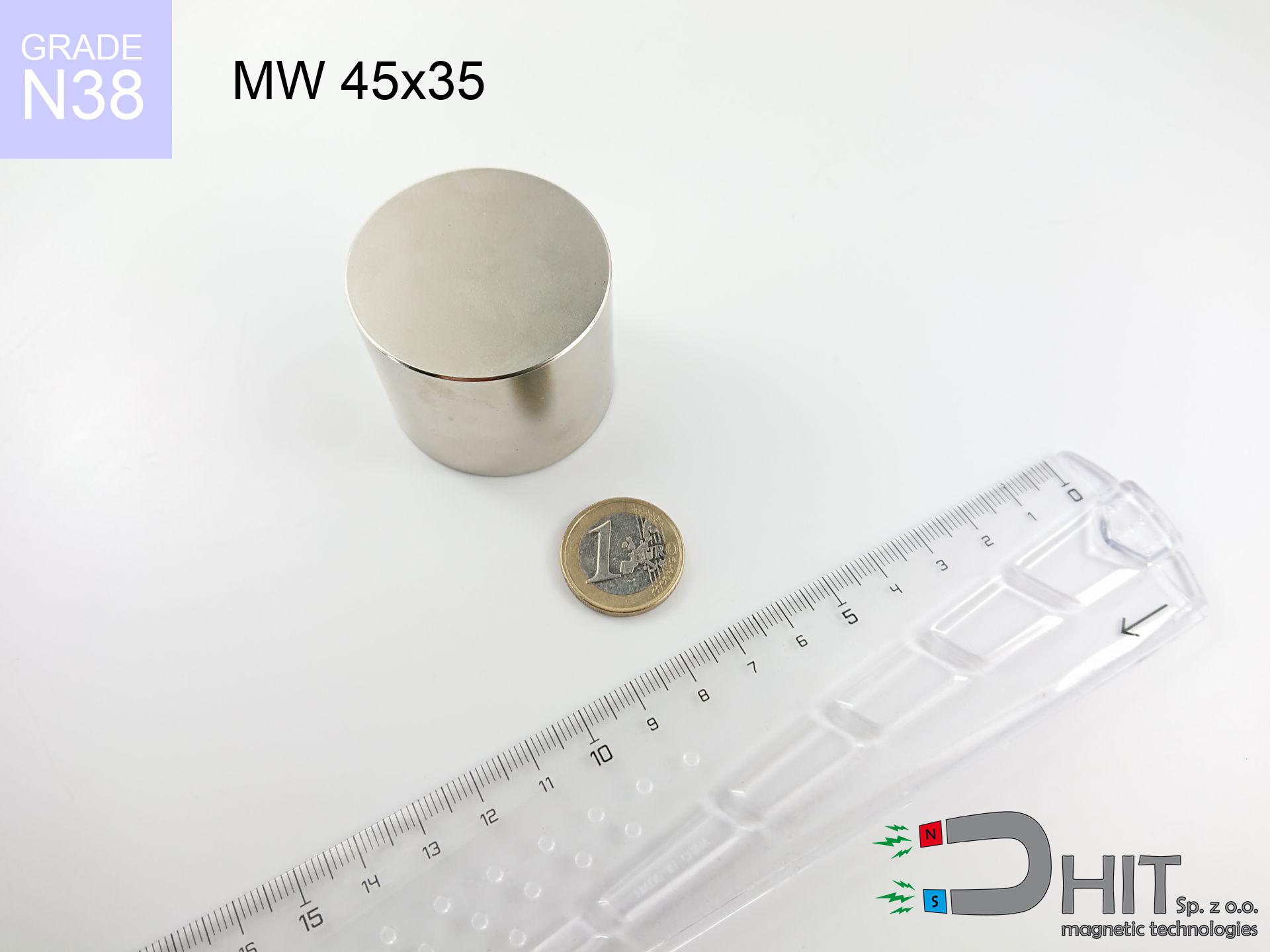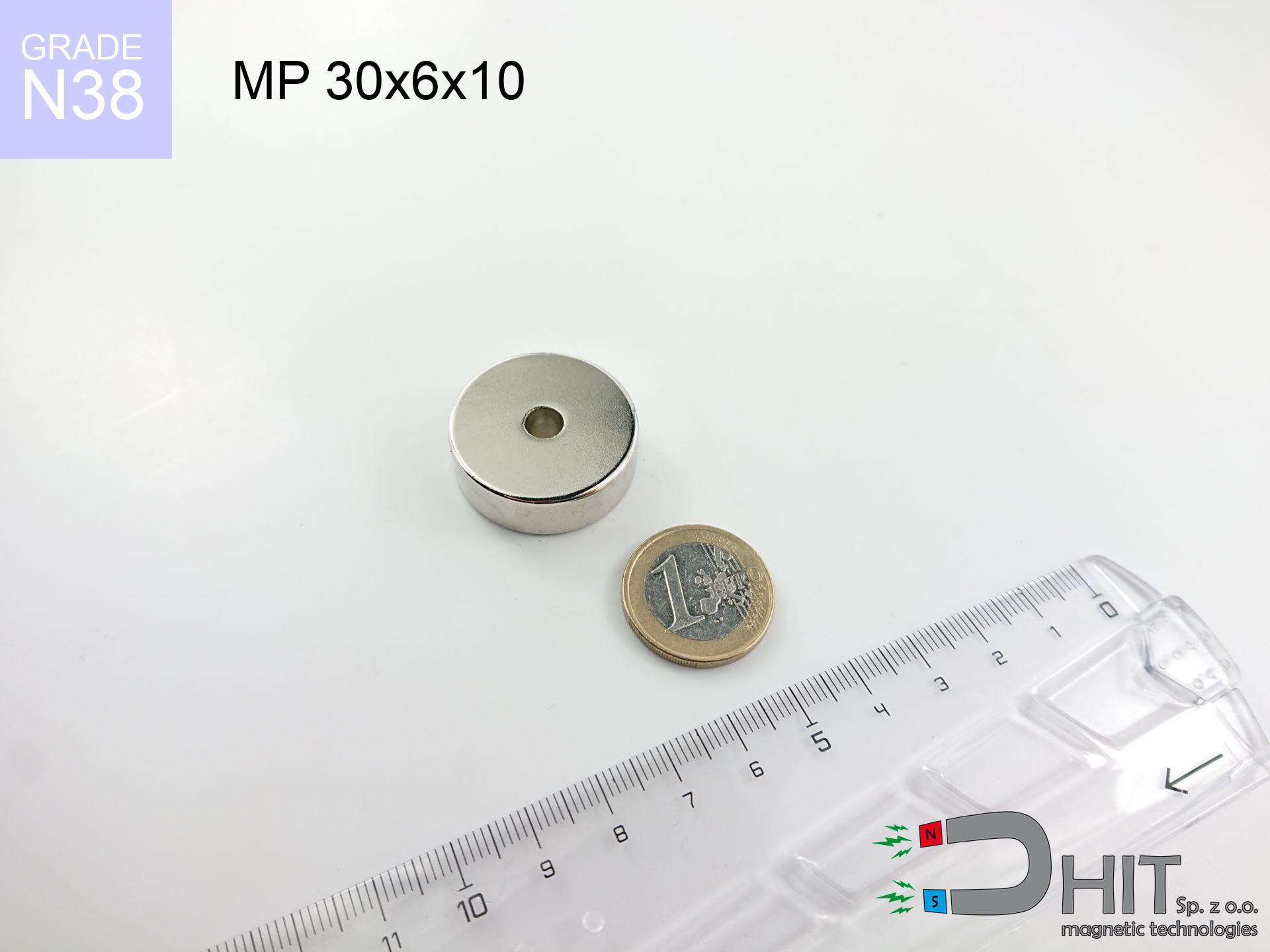UMGZ 20x15x7 [M4] GZ / N38
magnetic holder external thread
catalog number 190322
GTIN: 5906301813811
diameter Ø
20
mm [±0,1 mm]
height with thread
15
mm [±0,1 mm]
height
7
mm [±0,1 mm]
capacity ~
9.00 kg / 88.26 N
max. temperature
≤ 80
°C
catalog number 190322
GTIN: 5906301813811
diameter Ø
20 mm [±0,1 mm]
height with thread
15 mm [±0,1 mm]
height
7 mm [±0,1 mm]
capacity ~
9.00 kg / 88.26 N
max. temperature
≤ 80 °C
7.22 ZŁ gross price (including VAT) / pcs +
5.87 ZŁ net price + 23% VAT / pcs
bulk discounts:
need more quantity?Want a better price?
Give us a call tel: +48 888 99 98 98 or get in touch via contact form on our website. You can check the mass and the appearance of neodymium magnet in our magnetic mass calculator power calculator
Orders placed by 2:00 PM will be shipped on the same business day.
Specification: magnetic holder external thread 20x15x7 [M4] GZ / N38
Magnetic properties of the material N38
Physical properties of sintered neodymium magnets Nd2Fe14B
Product suggestions
Advantages and disadvantages of neodymium magnets NdFeB.
Apart from immense strength, neodymium magnets have the following advantages:
- They do not lose power over time - after approximately 10 years, their power decreases by only ~1% (theoretically),
- They protect against demagnetization caused by external magnetic field extremely well,
- In other words, thanks to the glossy nickel, gold, or silver finish, the element gains an visually attractive appearance,
- They have very high magnetic induction on the surface of the magnet,
- By using an appropriate combination of materials, they can achieve high thermal resistance, allowing them to operate at temperatures up to 230°C and above...
- Due to the option of accurate forming and adaptation to individual needs – neodymium magnets can be produced in a wide range of shapes and sizes, which amplifies their universality in usage.
- Key role in advanced technologically fields – find application in hard drives, electric motors, medical devices or other advanced devices.
Disadvantages of neodymium magnets:
- They can break as they are fragile when subjected to a powerful impact. If the magnets are exposed to impacts, it is suggested using magnets in a steel housing. The steel housing in the form of a holder protects the magnet from impacts and also increases its overall strength,
- High temperatures can reduce the power of neodymium magnets. Typically, after heating above 80°C, most of them experience a permanent reduction in strength (although it is dependent on the form and size). To prevent this, we offer special magnets marked with the symbol [AH], which are highly resistant to high temperatures. They can operate even at temperatures up to 230°C, making them an ideal solution for applications requiring high-temperature operation,
- Magnets exposed to a humid environment can corrode. Therefore, when using them outdoors, we suggest using waterproof magnets made of rubber, plastic, or other moisture-resistant materials,
- The use of a cover - a magnetic holder is recommended due to the limited production capabilities of creating threads or complex shapes in the magnet
- Possible danger to health from tiny fragments of magnets are risky, when accidentally ingested, which is crucial in the context of children's health. Furthermore, small elements of these devices can be problematic in medical diagnosis after entering the body.
Handle Neodymium Magnets Carefully
Dust and powder from neodymium magnets are flammable.
Do not attempt to drill into neodymium magnets. Mechanical processing is also not recommended. Once crushed into fine powder or dust, this material becomes highly flammable.
The magnet coating contains nickel, so be cautious if you have a nickel allergy.
Studies clearly indicate a small percentage of people who suffer from metal allergies such as nickel. An allergic reaction often manifests as skin redness and rash. If you have a nickel allergy, try wearing gloves or avoid direct contact with nickel-plated neodymium magnets.
Magnets should not be treated as toys. Therefore, it is not recommended for children to have access to them.
Neodymium magnets are not toys. Be cautious and make sure no child plays with them. In the case of swallowing multiple magnets simultaneously, they can attract to each other through the intestinal walls. In the worst case scenario, this can lead to death.
Keep neodymium magnets away from people with pacemakers.
Neodymium magnets generate very strong magnetic fields that can interfere with the operation of a pacemaker. This happens because such devices have a function to deactivate them in a magnetic field.
Neodymium magnets can become demagnetized at high temperatures.
Although magnets have shown to retain their effectiveness up to 80°C or 175°F, this temperature may vary depending on the type of material, shape, and intended use of the magnet.
Keep neodymium magnets away from GPS and smartphones.
Magnetic fields interfere with compasses and magnetometers used in navigation for air and sea transport, as well as internal compasses of smartphones and GPS devices.
Neodymium magnets are highly fragile, they easily break and can crumble.
Neodymium magnetic are highly delicate, and by joining them in an uncontrolled manner, they will crack. Neodymium magnets are made of metal and coated with a shiny nickel surface, but they are not as hard as steel. In the event of a collision between two magnets, there may be a scattering of fragments in different directions. Protecting your eyes is crucial in such a situation.
Neodymium magnets can attract to each other due to their immense internal force, causing the skin and other body parts to get pinched and resulting in significant swellings.
Magnets will attract each other within a distance of several to around 10 cm from each other. Don't put your fingers in the path of magnet attraction, because a serious injury may occur. Magnets, depending on their size, are able even cut off a finger or there can be a serious pressure or a fracture.
Keep neodymium magnets away from TV, wallet, and computer HDD.
The strong magnetic field generated by neodymium magnets can damage magnetic media such as floppy disks, video tapes, HDDs, credit cards, magnetic ID cards, cassette tapes, or other devices. They can also destroy devices like video players, televisions, CRT computer monitors. Do not forget to keep neodymium magnets away from these electronic devices.
Neodymium magnets are over 10 times stronger than ferrite magnets (the ones in speakers), and their strength can shock you.
On our website, you can find information on how to use neodymium magnets. This will help you avoid injuries and prevent damage to the magnets.
Please see the article - What danger lies in neodymium magnets? You will learn how to handle them properly.

![UMGZ 20x15x7 [M4] GZ / N38 UMGZ 20x15x7 [M4] GZ / N38](https://cdn3.dhit.pl/graphics/products/um-20x15x7-m4-gz-vaf.jpg)
![UMGZ 20x15x7 [M4] GZ / N38 UMGZ 20x15x7 [M4] GZ / N38](https://cdn3.dhit.pl/graphics/products/umgw-20x15x7-m4-gz-jeb.jpg)

![magnetic separator 32x200 [2xM8] / N52 magnetic separator 32x200 [2xM8] / N52](https://cdn3.dhit.pl/graphics/products/sm-32x200-2xm8-tus.jpg)



